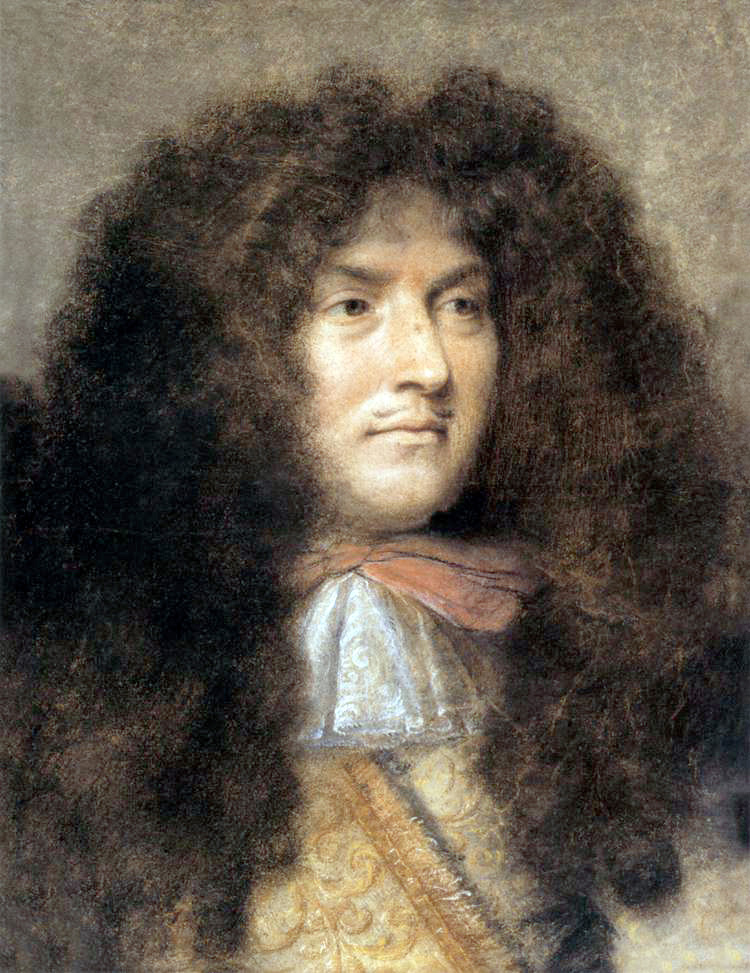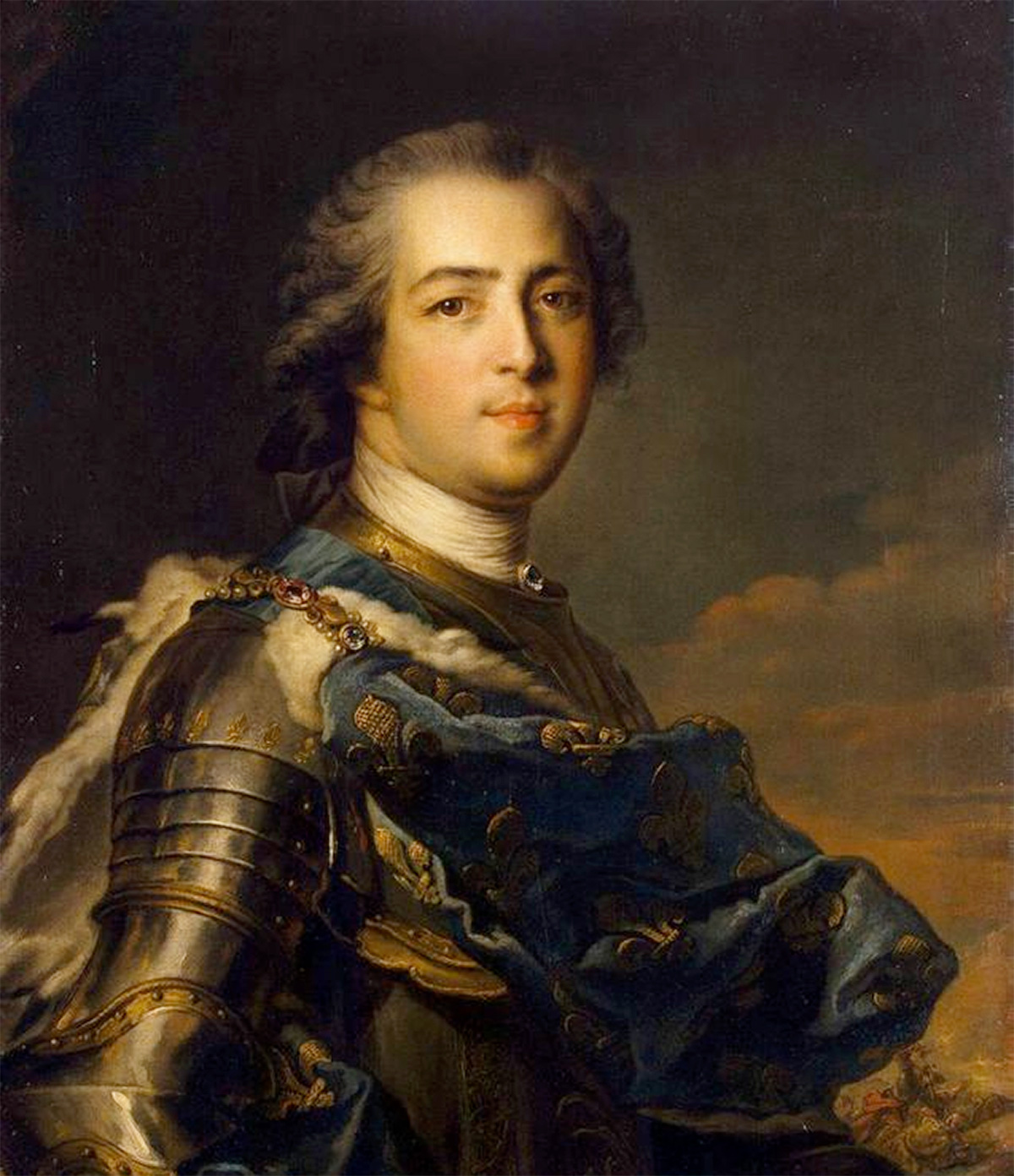The Wig Business was Big Business in Eighteenth Century France
Originally published at English Historical Fiction Authors
I
t is often assumed that the wig* of the 17th and 18th centuries was the preserve of the aristocracy, ‘an aristocratic ornament of Old Regime Europe’, a marker of high birth and status worn by the privileged few. Indeed, at the French Courts of Louis XIII and Louis XIV, wigs were very much part of the display of power and status.
[*Wig here refers to wigs worn by men. Women’s hair is not discussed in this post.]
The full-bottom wigs worn by Louis XIV of France required ten heads of long human hair to achieve one luxuriant wig with an over-abundance of flowing locks. Cost consideration aside, how to wear such an article in every day life made it prohibitive to all but the most aristocratic fashion-conscious courtier.
Yet, by the end of Louis XIV’s reign in 1715, the wearing of wigs had spread throughout France. Surprisingly, wigs were not the exclusive preserve of noble courtiers but had “tumbled down the social hierarchy”, so far down in fact, that by the mid 1700’s wigs were upon the heads of tutors, bakers, messengers, servants, cooks and shopkeepers. All wore a wig, and often owned two—one for every day and one for Sunday best.
The Marquis of Mirabeau lamented, “Everyone [in Paris] has become a Monsieur. On Sunday, a man came up to me wearing black silk clothes and a well-powdered wig, and as I fell over myself offering him compliments, he introduced himself as the oldest son of my blacksmith or saddler; will such a seigneur deign to dance in the streets?”
The male wig became big business in the 18th century. It was no longer an aristocratic affectation, or worn only by certain non-aristocratic professional groups such as judges, lawyers and clergymen. The wig was not confined to men in the city but spread to towns and villages. As well as every town having a wigmaker or three, estimates put the number of journeymen who trudged the roads of rural France selling wigs at 10,000.
The account books of French wigmakers attest to a customer base that included not only the wealthy merchant citizens of the town but included priests, petty clerks, and shopkeepers, and in the death inventories of middle class citizens wigs figured as prominent possessions. The wig was such a universal object of consumption by mid century that it became synonymous not with luxury but with convenience. Wig advertisements stressed comfort and appeal as most important when considering the purchase of a wig. Wigmakers were keen to emphasize the free movement of the head of the 18th century wig. Unlike its predecessor, the full bottom wig, which restricted its wearer’s movements and peripheral vision, an 18th century wig permitted the wearer to carry out his daily life as if he was wearing his own head of hair, not someone else’s.
The Parisian wigmaker Neuhaus asserted that wearing a wig was far more convenient than looking after natural hair. Well, he would, wouldn’t he? He’s in the business of selling wigs! But he went to great lengths to ensure his customers felt comfortable in their wigs. He announced the invention of a new “elastic skin that grips the wig” without any irritating loops or garters, and “this skin has the softness of velvet, and does not at all inconvenience the head.”
In some respects, Neauhaus’s assertion regarding the convenience of the wig over a natural head of hair was true, given the prevalence of head lice, the lack of shampoo and intermittent bathing practices. It was far easier for a man to have his head shaved and wear a wig than to groom his own hair, particularly when, for a small fee, he could have his barber maintain his shaven head and have his wig serviced by his local wigmaker.
With wigs being the universal male consumer product of the 1700s, and everyone from shopkeeper to king wearing one, men were spoiled for choice. While a shop boy might only be able to afford one wig, and thus had to choose wisely and for durability, those of the one percent of the population, the nobleman and the wealthy cit, could afford to own dozens of wigs. If they considered themselves to be a leader of fashion, were eccentric, or merely had the money to indulge a whim, they could purchase wigs that others could only dream of owning (or not, as the case may be!).
It has often been assumed that every man wore a powdered wig, but this was not so. For everyday wear and for most occasions, men wore their wigs in their natural state, which was unpowdered natural hair. Only on the most formal of occasions, and those of the nobility attending court or a formal function, were wigs powdered. Another misconception is that because wigs looked like wigs (you could tell it was a wig!) then the wig must have been made from horsehair. Not so. All the evidence—portraits, surviving wigs, engravings, documents, letters—suggest that less than half of all wigs consisted of hair from horses, and from such animals as goats and cows. Most wigs were made from human hair. For the shop boy, however, the “horse-hair tie wig” was probably his only option.
There were a small number of wigmakers who were prepared to experiment with other materials, and often because of this found themselves ostracized by their fellow wigmakers. Yet, the experimental wig attracted the eccentric, the dandy and the jaded gentlemen. Looking for something different to make them stand out in the crowd or as a mark of their wealth, these gentlemen were not afraid to parade about society and garner the stares of amazement, incredulity and puzzlement of others about the hairpiece atop their heads.
Horace Walpole, that great 18th century letter writer and gossip, who collected fascinating tidbits about Society, wrote in a letter dated 1751, about Edward Wortley Montagu’s odd manner of dressing, commenting “that the most curious part of his dress, which he has brought from Paris, is an iron wig; you literally would not know it from hair...”.
Naturally, I just had to give one of my characters an iron wig and so the eccentric poet Hilary Wraxton in Salt Bride gets to wear one at a recital, causing hilarity and disruption to an afternoon’s entertainments.
Made from iron wire turned into spiral curls, such a wig could also be made of copper. While Edward Wortley Montagu may have thought he cut quite a figure in English society parading about in his iron wig, one wigmaker advertised an iron wig as being economical because it can “withstand rain, wind and hail, and all without causing discomfort to the wearer” (I wonder about that final claim).
Feathers were also used in the making of wigs, particularly sporting wigs. Wigs made from the tails of mallards or drakes were said to be not only durable but could also fight off the wet. Some parsons’ wigs employed feathers at the front and were known as ‘feather tops’. One can imagine the congregation doing its best to keep a straight face with a parson at the pulpit in a fine feather top wig delivering the Sunday sermon.
Most sectors of male society succumbed to the wearing of a wig in 18th century France. Testament to the wig’s universality was its necessity. Without a wig, a gentleman’s outfit was incomplete; he could not go about his daily business out in the world without his wig. Just as in the 21st century, a man’s business suit is not complete without a tie. An 18th century bewigged gentleman wished to project an air of elegance and refinement, no matter his station in life, and this is evidence in the many portraits that survive of handsome chaps in frockcoat, breeches and perfectly fitted wig, whether as part of a family group or in a singular pose, the wig helped maketh the man. As to the many styles created for the gentleman’s wig, that requires a whole other post!
Bibliography
John Woodforde, The Strange Story of False Hair, Routledge and Kegan Paul, London, 1971
Michael Kwass, Big Hair: A Wig History of Consumption in Eighteenth-Century France, American Historical Review, June 2006
The Letters of Horace Walpole, Vols. 1-4, Charles Duke Yonge (Ed), Putnam and Sons, London, 1890






